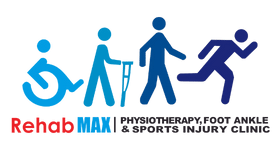OSTEOARTHRISTIS

Osteoarthritis is the most common form of arthritis, affecting millions of people worldwide. It occurs when the protective cartilage on the ends of your bones wears down over time. Although osteoarthritis can damage any joint in your body, the disorder most commonly affects joints in your hands, knees, hips and spine. Risk factors for developing OA include age, female gender, obesity, anatomical factors, muscle weakness, and joint injury (occupation/sports activities).
Classically, OA presents with joint pain and loss of function; however, the disease is clinically very variable and can present merely as an asymptomatic incidental finding to a devastating and permanently disabling disorder. The presentation and progression of OA vary greatly from person to person. The triad of symptoms of OA is joint pain, stiffness, and locomotor restriction.
Patients can also present with:
Muscle weakness and balance issues
pain hampers activity and resolves with rest
Swelling
Joint deformity and instability (patients complain that joint is “giving way” or “buckling,” a sign of muscle weakness).
Treatment:
Symptoms can usually be effectively managed, although the underlying process cannot be reversed. Staying active, maintaining a healthy weight and other osteoarthritis treatment slows progression of the disease and help improve pain and joint function
Icing for 20 mins atleast 3-4 times a day, in order to numb the pain and reduce swelling and inflammation around the knee
Kinesiotaping for support of patella and activation of the muscles around it
Dry Needling/ Myofascial release to relax the tight Vastus lateralis, internal rotators of hip and knee; as well as to activate the glutes and VMO
Strengthening exercises of weak and stretching of tight muscles around the knee (Vastus medialis obliquus, Vastus lateralis, hamstring), hip (Iliopsoas, TFL, Gluteus medius and maximus, piriformis) and core (Transverse abdominis)
Prognosis:
There is no cure for osteoarthritis, but the ill-effects of the process can be managed and slowed down by following a good rehabilitation program. The surrounding structures of a joint such as the muscles, tendons and ligaments that can be strengthened, support the joints and take off excessive loads too.://www.physio-pedia.com/De_Quervain%27s_Tenosynovitis

